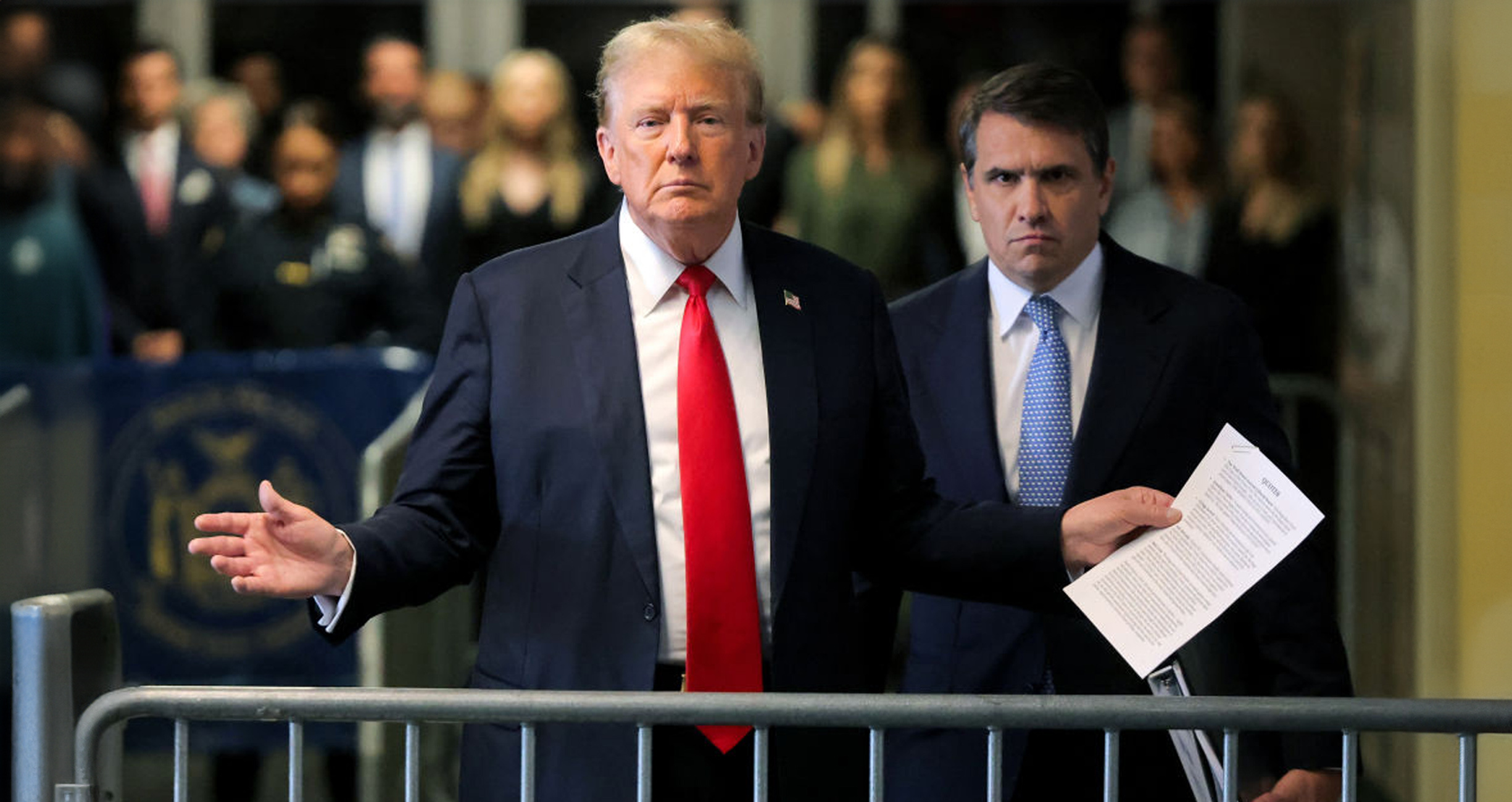

Many people sentenced in New York State do not have the same options Trump does. They have only one: prison.
By Marta Nelson
Former President Donald Trump now stands to be sentenced on September 18 on 34 felony counts of falsifying business records to aid his position in the 2016 presidential race. The sentencing was initially scheduled for July 11, but has been pushed back to allow the court to rule on his new claim that, somehow, his behavior as a candidate for president is immune from prosecution under the United States Supreme Court’s July 1 ruling extending presidential immunity for official acts. As far-fetched as that argument may be, Trump will be given the time and grace to make it, continuing the pattern of affording him textbook due process.
Trump’s sentencing, whenever it occurs, presents a rare opportunity for millions of  Americans to pay attention to sentencing and to consider what it is supposed to accomplish. In 2022, courts in New York State handed down more than 124,000 convictions. For the people receiving one of these—in particular, the roughly 19,000 people convicted of a felony—and their loved ones, September 18 will provide an opportunity to contrast Trump’s sentencing experience to their own.
Americans to pay attention to sentencing and to consider what it is supposed to accomplish. In 2022, courts in New York State handed down more than 124,000 convictions. For the people receiving one of these—in particular, the roughly 19,000 people convicted of a felony—and their loved ones, September 18 will provide an opportunity to contrast Trump’s sentencing experience to their own.
What is a sentence?
Technically, a sentence is a state-sanctioned response to a criminal conviction. Ideally, it should take the moment of conviction—of “proven” harm (quotes reflect the fact that 96 percent of felony convictions follow guilty pleas)—and lay a course forward that both delivers accountability for the harm done and makes it less likely that the defendant will do it again.
Trump’s court case
In order to decide upon a sentence, judges need flexibility and a variety of options to deal with the particular defendant and particular survivors in front of them.
Trump’s case illustrates that well. His case practically screams that judges need to examine the facts of the case and the defendant before them. He is a very particular defendant—the current presidential candidate of a major political party and a former president, a person with no prior criminal convictions but with civil judgments in related cases, and a history of noncompliance with previous court orders. Those impacted are also unusual—not one person, but the residents of New York, who the jury found Trump deceived by falsifying business records to aid his image during an election.
The judge must consider many things: What actions could Trump take to make it up to these deceived residents? Is that even possible? And are there things the judge could do to make it less likely that Trump will commit a similar offense again? Those could range from more restorative options, like counseling, to “specific deterrence,” in which the sentence is so onerous that Trump would think twice before doing it again.
How the judge could rule
There is a lot to balance in this case, and the judge needs many options at hand to help him find that balance. Fortunately, they are available.
The judge could sentence Trump to prison for up to four years, but he does not have to. Other options include community-based sentences during which Trump would be at liberty—including probation, during which Trump would be supervised by a probation officer, or conditional discharge, during which he would not. If given either probation or conditional discharge, he must follow conditions set by a judge, which could include reparation or restitution, public service, or “avoid[ing] injurious and vicious habits” (perhaps like accessing certain social media platforms). The judge’s task is to choose from these various sentencing options, or even create a combination of them, to craft a sentence that will do its best to demonstrate accountability and reduce the likelihood that Trump will reoffend.
The double standard of Trump’s case
Unfortunately, many people sentenced in New York State do not have the same options Trump does. They have only one: prison.
Many New Yorkers with criminal convictions are subject to mandatory minimums, which are precisely what they sound like and require a minimum period of incarceration. Mandatory minimums affect 34 percent of the felony charges for which people are arraigned in New York State (41 percent in New York City). They attach to specific offenses (ranging from the sale of half an ounce of narcotics to robbery) or to specific people (usually because of their conviction histories). For example, in New York, anyone convicted of a felony who was convicted of any prior felony at any point within the previous 10 years must be sentenced to prison, period. And, of course, this restrictive sentencing isn’t distributed evenly; in New York City, Black people make up 59 percent of convictions carrying mandatory minimums, Hispanic/Latinx people make up 33 percent, and white people only 7 percent.
Mandatory sentences don’t work
Throughout the end of the 20th century, lawmakers enacted mandatory minimums in every state and at the federal level in order to appear tough on crime. Extensive research shows, however, that these sentences—like any harsh sentence—do not deter crime. This is because people who commit crimes are less likely to consider the perceived harshness of a future sentence than they are to consider their perceived likelihood of being caught. Imposing mandatory minimums ends up being both overly punitive and a gift to prosecutors, who use them as a threat to coerce pleas.
If the purposes of sentencing are to hold people accountable and to reduce their likelihood of reoffending, prison is—in many instances—the worst place to accomplish these goals. A prison sentence is reactive, not proactive. It does not require a person to make amends to the people they have harmed—unlike community-based accountability options like restorative justice, which can both deliver accountability and help to prevent future crime. Moreover, the experience of prison can be violent and damaging, and jails and prisons have failed to keep survivors of crime and other people safe.
Everyone deserves the same chance as Trump
To give more people facing sentences the options that Trump has, New York should pass the Ending Mandatory Minimums Act. This legislation would not take prison off the table entirely for the offenses that now require it; it simply would not mandate it.
With the passage of the Ending Mandatory Minimums Act, judges would be able to make their determinations based on the same factors that Trump’s judge will, including whether prison is necessary for the protection of others and what sentence fits the interests of justice. Some people facing mandatory minimums would, no doubt, still be sentenced to prison, as Trump himself may or may not be. But by removing the certainty of prison in each instance, New York would take an important step toward treating people going through the justice system with fairness and equity—and New Yorkers would be the better for it.
Marta Nelson is the Vera Director of Sentencing Reform – originally published by Vera Institute of Justice.

The only double standard involved is how the Democrats use lawfare to go after Trump.
The double standard is actually how conservatives are protecting a serial criminal and pathological liar.